Friday 16th July saw a very unusual destination for Edinburgh Trams – Haymarket Yards where there isn’t a proper stop! With the overhead damaged at West End after a lorry reversed into a lamppost and the power having to be isolated it wasn’t possible to run as far as Haymarket so after a period of trams from the Airport terminating at Murrayfield it was decided to run to Haymarket Yards instead.
Haymarket Yards is located approximately 250 metres to the west of the Haymarket tramstop and features a three track layout to allow for trams to be stabled there (the most high-profile use of this was on the first weekend of operation when a failed tram was moved there) and also has a low level “platform” for staff use. Whilst this is not the same height as a standard platform – and does not provide level access to the tram – it does make it easier to get on and off the tram. To further aid passengers to board a ramp was also provided from the pavement, although many passengers chose to use other doors, accepting the slight step-up.
The incident itself saw no trams able to run through to York Place for several hours. It happened after a lorry reversed into a lamppost at West End which in turn fell across a span wire causing damage to the overhead. Repairs took several hours to complete and in that time the service ran from the Airport to Murrayfield initially before it was later extended to Haymarket Yards. A full service through Edinburgh City Centre resumed at approximately 1800.
Often when there is disruption of this type public transport will often run a service which is the most operationally desirable so to see Edinburgh Trams use a “non-stop” at Haymarket Yards to get passengers as close to the city centre should be applauded.
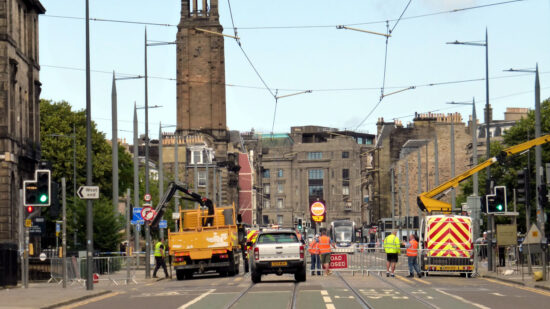
The incident occurred at the corner of Coates Crescent and Manor Place and so Coates Crescent was closed to all traffic.
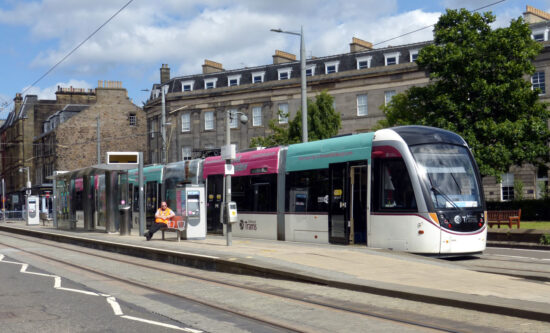
Tram 255 sits at West End tramstop with pantograph down and the Driver enjoying the nice weather and waiting for a return to normal service.
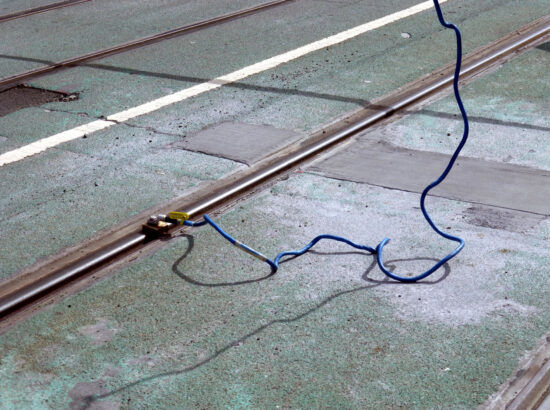
To facilitate work on the overhead it is necessary to earth it and the lead from the overhead is show firmly fixed to the rails.

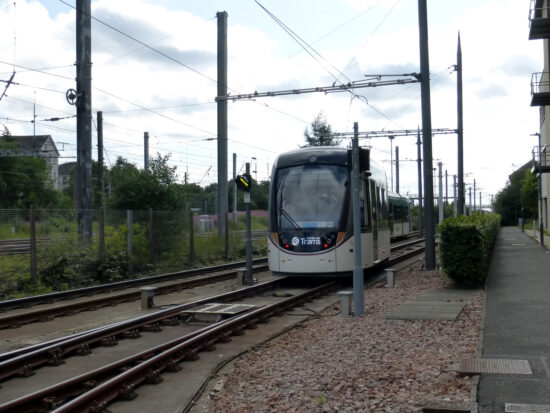
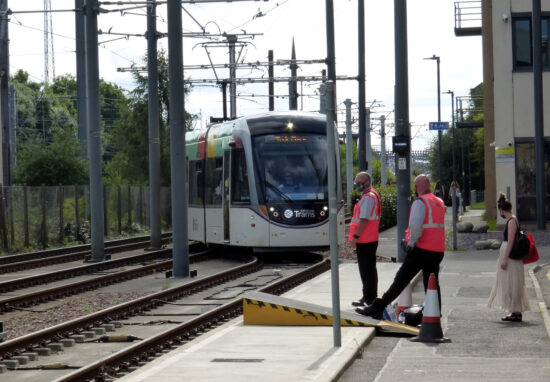
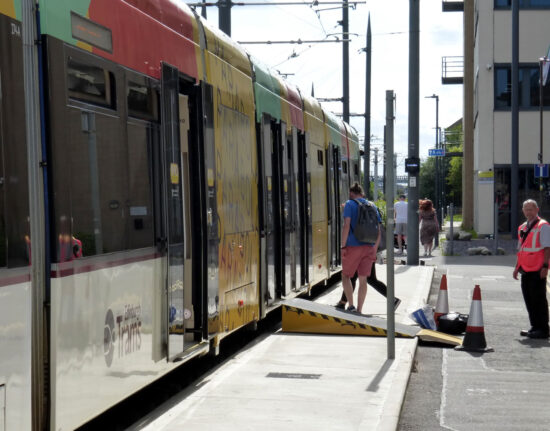
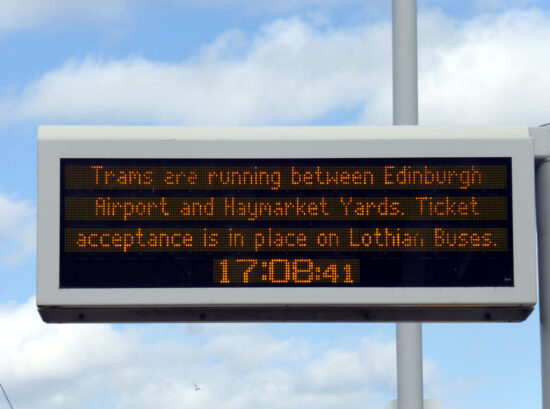
The photograph showing the earth lead interests me. Some years ago I was in Lille having a look around the old tram depot and yard, after the new new Mongy line was then operating over the rebuilt route, The depot was full of the previous fleet, and a number were in the yard, but a lead was attached to the overhead, and clipped onto a rail, as in todays photo, but no one has been able to tell me what was going on. Can someone help?
Hi Geoff
Are you asking what is the reason for the blue “earthing cable” wrt Edinburgh
Hi Fred, I answered your question a couple of daays ago with another question. So I repeat here what I put: I am thinking it is the same reason for what I saw in Lille. So in answer to your question, yes, but what is it all about?
I am thinking it is the same reason for what I saw in Lille, in answer to your question Fred, yes what is it about.
The ‘loop’ at Haymarket originally was intended for service use. Trams were to
run at 10 min intervals Newhaven to Edinburgh Airport, overlaid by others running
Ocean Terminal to Haymarket. This would give a five minute interval service through
the city centre, trams using the loop as a turnback. This went by the board, of course,
when the project ran into difficulties and York Place to Newhaven abandoned – happily,
as it has turned out, only temporarily. The third track at Haymarket Yards has also seen some use on driver training runs.
Hi Geoff
Earthing cables are used to protect the ole (overhead Line equipment) maintenance team from coming in contact any energised (live) ole. Earthing the ole is just one of the many items required to set up a “Safe System of Work”.
The earthing cables are attached to the ole after first connecting the other end to the rails or some DEP (designated earthing point). Earths are attached to the ole at both ends of the work site or in most cases a point on the ole where the electrical feeders are connected to the section of the ole being worked on.
Prior to earthing any ole, all the traction supplies feeding the particular section are isolated and locked off, all the keys are usual held by a designated person associated with the worksite.
Some of these feeder isolators are 3 position, Open, Closed and Earth position, thus allowing the section of ole to be earthed without the need for earthing cables, but in other circumstances addition earthing cables are still used.
An interest point about the term earthing cables on most tramways are not earthing cables but negative cables, as on DC (Direct Current) tramways, the ole is positive and the track the negative return conductor, so in fact they are negative bonding cables.
Back in 1991 when Metrolink was being set up, it was decided to remain with the NR (Network Rail) terminology as “Isolating and Earthing”, as most of NR ole is 25kv AC (alternating current) and the return conductor being the rails are connected to earth (neutral) and not negative.
Most of the modern tramways have followed the original Metrolink “Isolating and Earthing” procedure in some form.
I trust this helps to explain to some degree the use of Earthing Cables.
Regards
Fred
Thanks Fred, I am going to have to read this several times for an ancient brain to take in. I very much appreciate your effort to explain what was going on!
When we (the Council) were required to do maintenance work on the street lighting on the tram routes in Sheffield after Supertram started, the procedure was for Supertram to isolate the power when required, hand a written confirmation to our person in charge of the work crew and place an isolation earthing clamp near the work site. If our worksite moved to another location the earthing clamp would also be moved, so that our operatives could always see the earthing clamp was in position.
Nigel L